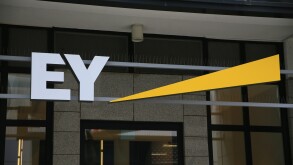The countdown has already begun. As of January 1 2026, Brazil’s consumption tax reform will take effect, beginning its implementation phase. The new framework is guided by the simplification of consumption taxation, currently characterised by a patchwork of complex rules and procedures. Despite the promise of rationalisation, businesses must exercise heightened vigilance and advance planning to avoid adaptation failures that may jeopardise compliance and ensure the uninterrupted continuity of their operations.
1 What changes in 2026?
As of January 2026, the new VAT – a contribution on goods and services (CBS) and goods and services tax (IBS) – will begin an implementation phase. Both taxes will be levied at a combined rate of 1% (0.9% for CBS and 0.1% for IBS), with the aim of enabling a gradual transition to the new tax model. Nevertheless, if the taxpayer complies with the ancillary tax obligations, the payment of the tax will be waived. In practical terms, it is intended that 2026 be a test phase for the implementation of the new taxes.
These experimental rates are strictly operational in nature, allowing the tax authorities and taxpayers themselves to validate calculation and bookkeeping systems, simulating the new regime’s dynamics before its effective enforcement in 2027.
Taxpayers under the simplified tax regime (Simples Nacional) will be exempt from these obligations in 2026.
1.1 Electronic tax documents
To enable implementation of the above, electronic tax documents (DF-e) – such as an electronic invoice, an electronic invoice for sales to end consumers, an electronic service invoice, or an electronic transportation invoice, which are the electronic invoices provided for the various types of transactions – will reflect the innovations introduced by the tax reform, particularly with respect to IBS, CBS, and the selective tax (IS).
The adaptation of document layouts, guided by technical notes issued by the Brazilian Federal Revenue Service (RFB) and the state tax authorities, is central to operationalising the new taxes. These notes provide practical guidelines for document layouts, enabling taxpayers, tax software developers, and ERP providers to adjust their systems in advance, thereby avoiding abrupt operational shifts and minimising the risk of inconsistencies in meeting compliance obligations.
1.1.1 Specific fields in DF-e
Each electronic tax document will include dedicated fields for IBS, CBS, and IS, allowing for automated tax calculation. This structure aims to replace the multiplicity of current obligations, ensuring greater traceability and transparency in transactions.
From October 2025, it will be possible to test the new layouts on an optional basis, without legal effects.
1.1.2 Unified bookkeeping model
By integrating CBS, IBS, and IS into tax documents, the intention is to gradually replace the currently complex electronic tax bookkeeping system. This includes digital tax accounting for the tax on the circulation of goods and services and the tax on industrialised products (EFD–ICMS/IPI), digital tax accounting for contributions (EFD–contribuições), and municipal service filings. These will give way to a so-called assisted assessment – further discussed below – streamlining compliance controls.
1.2 Ancillary obligations
The implementation of CBS, which will come fully into force in 2027, is being coordinated by the RFB through a “Pilot Plan”, which is already under way and involves selected companies from various industries and of different sizes. This project aims to validate the technological and operational infrastructure that will support the new tax assessment framework.
Within this test environment, two instruments stand out:
The assisted assessment; and
The Electronic Return for Specific Regimes (DERE).
The assisted assessment marks a break from the current digital bookkeeping model. Today, taxpayers must satisfy multiple ancillary obligations – such as EFD–ICMS/IPI, EFD–contribuições, and municipal service returns – generating duplication of information and high compliance costs.
With assisted assessment, the logic is reversed, as the tax authorities will receive data directly from DF-e issued by taxpayers and will conduct preliminary tax calculations. Taxpayers will act more as validators, reviewing and correcting possible inconsistencies.
DERE was designed for sectors with specific characteristics that cannot be accommodated under the general model due to regulatory and economic particularities. Initially, it will apply to financial institutions, football corporations, health plan operators, and betting and lottery activities.
2 Final thoughts on preparing Brazil’s consumption tax reform
The consumption tax reform outlines a simplification and modernisation of Brazil’s tax system, ushering the country into a new stage of tax maturity. However, the effectiveness of its benefits will depend on timely taxpayer preparedness:
Legal entities, which must review internal processes and management systems; and
Individuals, who will assume new tax responsibilities in relation to consumption and may even be classified as taxpayers of IBS and CBS, depending on the nature of their transactions.
Failure to adequately adapt may result in operational inconsistencies, tax assessments, and business disruptions, undermining not only tax compliance but also economic competitiveness and legal certainty for all stakeholders involved.













